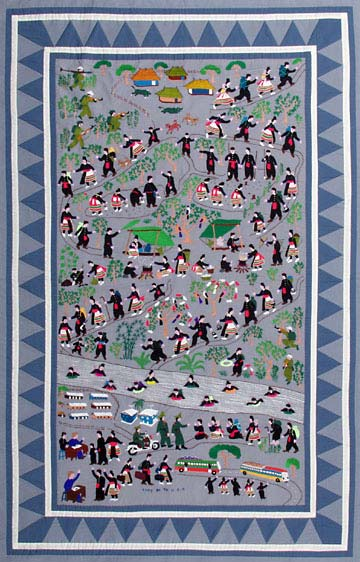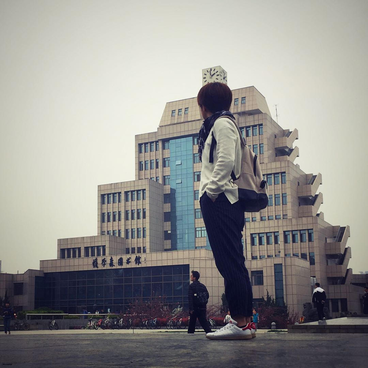This week of Asian/Pacific Islander Heritage Month continues with additional stories from members of our college community.
Sunnee Thao
It was December 1985 and the Vietnam war had been over for a decade according to American history. Little do they know, we Hmongs, who were roped into the war, were still fighting and I was on the border of Laos and Vietnam while your mother was making her way across the Laos-Thailand border in search of refugee”. This was how my father always started his story of how we got to America. He would then go on to explain that being one of the troops abandoned near enemy territory, it took him nearly 3 months to cross the mountainous landscape avoiding any enemies and traps.

In early March of 1986, he swam across the Mekong river that spanned the border of Laos and Thailand to reunite with my mother. There, in the refugee camp of Ban Vinai, they would spend 7 years starting and raising a family until the Royal Thai Government announced the closure of the camp. Some people were relocated to other refugee camps. Others were forced to return to a war-torn country. My mom and dad, who served in the army, was [sic] given a choice of resettling in America. Having heard rumors of the American dream and a better life, they packed what little belongings they had and ventured off to a foreign country that they knew very little about.
On a cold and frigid night of December 1993, my parents along with my two elder siblings and I landed in the Minnesota international airport. My mother would tell me, when we stepped outside, my 2-year-old self saw white, fluffy snow drift down from the sky for the first time and my eyes lit up. That was the moment when my mother knew, this was the correct decision.
Lusi Zhang
I still clearly remember that feeling of nervousness from the very first real dialogue with someone in English outside my English courses. Before I talked to the Starbucks barista, I meditated over and over again with “I want a Latte, not a Mocha” while waiting for departure at Incheon Airport for the second flight as a part of a long trip with 4 connections from China to the United States. Surprisingly but also not surprisingly, my communication was not very effective as I ended up with a large mocha. As an international student, I am not unique from many other non-citizens and first-generation immigrants who came to the United States alone with two large suitcases, thousands of miles away from their home country to pursue education and career opportunities. Study abroad has always been an adventure, while the COVID-19 pandemic exacerbated our unprecedented worries from conflicting opinions and diverse attitudes/behaviors towards a pandemic from different countries (i.e. Asian vs western countries), the uncertain immigration policies changes, and xenophobia towards the AAPI and Asian foreigner communities.

My generation in mainland China had unique early-life exposures to the 2003 SARS epidemic, the 2008 Sichuan earthquake, and the 2009 swine flu outbreak. I also experienced and witnessed how solidarity helped the nation to conquer natural catastrophes and led to the sustainable development of humanity. The more turbulent the situations, the more crucial it is to stay calm and positive. This lesson I learned from those experiences has become a philosophy of mine, guiding me to cope with the global pandemic, civil unrest, and political turmoil. Nevertheless, I couldn’t thrive in stressful situations during PD3/4 years on my own without support from friends and mentors within the UMN “pharmily”. I feel grateful for the culturally inclusive environment of UMN COP and proud to have professors and mentors who provide me with great support and mentorship academically and emotionally and always feel passionate about my career development and wellbeing.
Thank you to Sunnee and Lusi for sharing their stories. Carrying over the theme from last week, being part of an inclusive community starts with getting to know one another and sharing our journeys. For graduate and professional students that can mean recognizing and supporting the unique path they take through the college and into their careers. For our colleagues, it can mean working to understand one another’s passions, goals and ambitions. We are all part of this family, or as Lusi noted, what we often refer to a “pharmily.” We aim to support those who identify as Asian American/Pacific Islander, as well as all other members of our community in their unique journeys.